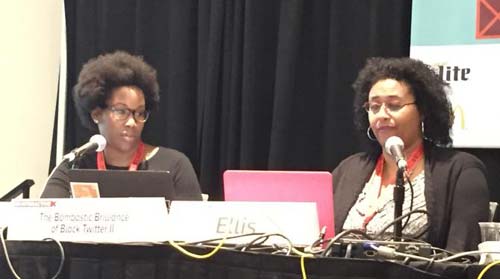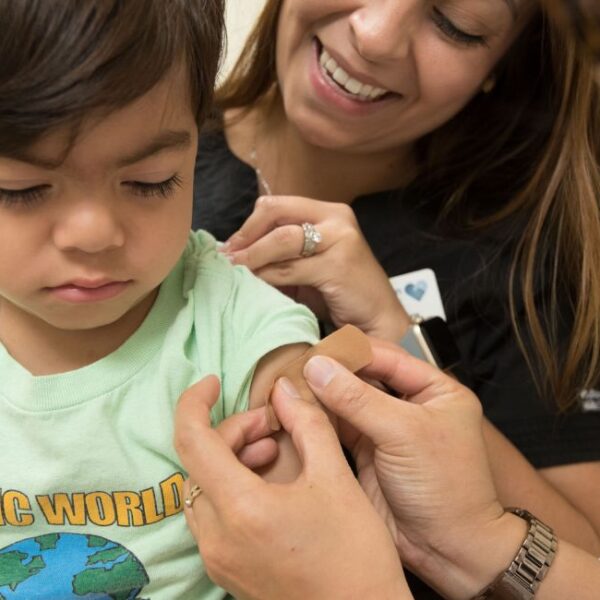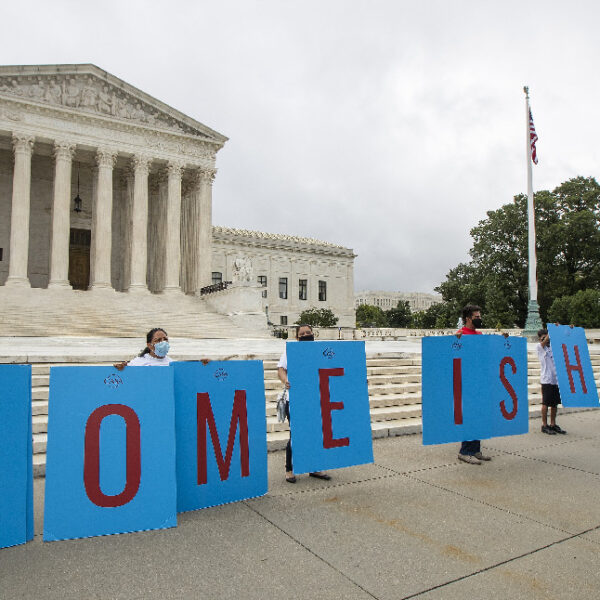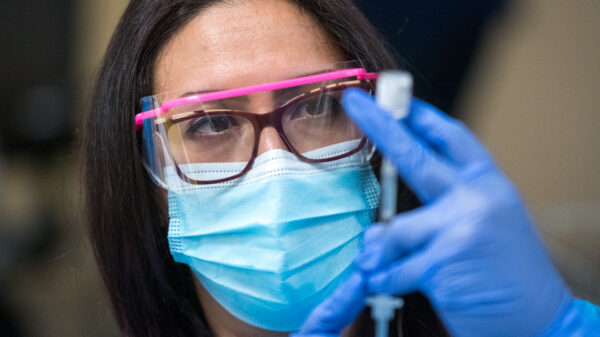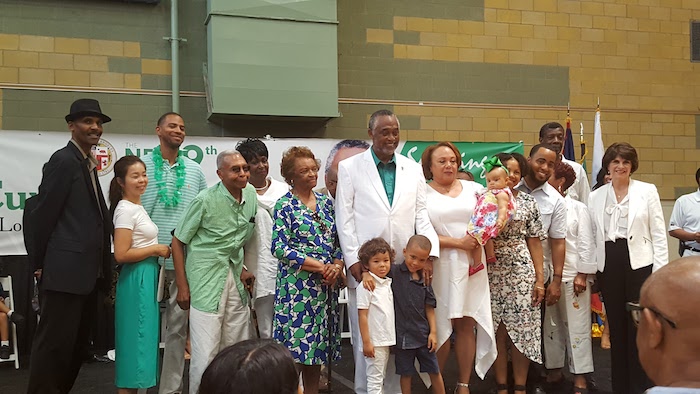
Photo by Jose Luis Pelaez, Inc./Blend Images/Corbis
Magazine, The Immigrant Experience, By Julian Do, Contributor to The Immigrant Magazine
LOS ANGELES, California —As soon as some states have released their preliminary data on the number of Covid-19 cases and deaths, this information reveals a picture that many have anticipated and feared from the beginning: the vulnerability of ethnic communities in this pandemic.
And therein lies the rub: ethnic and immigrant populations, deemed as the most vulnerable link in the fight against Covid-19 pandemic, are also the workforce responsible for many of the essential works in healthcare, food production, sanitation, and delivery. In other words, they help keep the society safe and functioning while being the least protected.
Ethnic populations are the most vulnerable group
Demographically, even with limited data, black Americans, which include immigrants from Africa, are so far the hardest hit group.
Combing through released data from 10 states — Missouri, Michigan, South Carolina, Wisconsin, Kansas, Louisiana, Illinois, Georgia, Mississippi and Arkansas—as well as in the District of Columbia, the APM Research Lab has found: “Black Americans are dying of COVID-19 at a rate of more than twice their population share. Collectively, they represent 11% of the population in states releasing data, but have suffered 28% of deaths.”
Similarly, in California, Covid-19 data released by the California Department of Public Health (CDPH) shows mortality rates among African Americans and blacks are nearly twice that of their population percentage in the state.
In general, the CDPH data also shows ethnic communities, as the minority-majority population representing 60% of California’s total residents, are accounted for 70% of the number of confirmed Covid-19 cases.
The whole picture, cautioned Barbara Ferrer, director of the Los Angeles County Department of Public Health, is still unclear because the racial and ethnic data released by the state and counties are still only partial.
Speaking at a recent telebriefing organized by the Ethnic Media Services with the support of the Blue Shield of California Foundation, Dr. Stacie L. Walton, an African American pediatrician with background in public health, says the mortality rates among black Americans are shockingly higher than the level she had initially anticipated.
“Historically our community has been oppressed and we haven’t had access to proper healthcare for so long,” says Dr. Walton.
Combined with poverty, she adds, black Americans have already been in poor health with weak immune systems, and they therefore are at high risk during the pandemic.
The invisible population with long history of health disparities
Another population with similar experience to that of black Americans are the American Indians and Alaska Natives, who are the least visible population during this pandemic.
“Over the years, the CDC has consistently released data showing that American Indians and Alaska Native have large health disparities,” says Virginia Hendrick, executive director of the California Consortium for Urban Indian Health and a member of the Yurok Tribe.
Tribal populations, who are known to have high rates of respiratory diseases, are extremely vulnerable to Covid-19, which attacks people with weak respiratory conditions.
According the CDPH data, there are 50 confirmed Covid-19 cases among American Indians and Alaska Natives. The low number, Hendrik explains, is due to the fact people in her communities are reluctant to participate in the testing.
Like the experience of black Americans, historically, there had been government sponsored malicious medical measures against Indian tribes like sterilizing Native American women to control population growth. As a result, tribal people have become distrustful of any public health information and even vaccines if the messagings are not presented in manners that are sensitive to their cultural traditions.
Data from the 1918 flu pandemic, she adds, shows American Indians and Alaska Natives suffered fatality rates four times the national average. With the Covid-19 pandemic, she is concerned that history might again repeat if there are no adequate healthcare services and economic assistance to her communities.
Assist and protect the essential workers
In this Covid-19 pandemic, perhaps the biggest elephant in the room is how to protect the essential workers, many of whom are from ethnic and immigrant communities whose circumstances require special assistance.
According to a 2017 report produced by the University of California – Division of Agriculture and Natural Resources, “The largest 10% of all farms account for three-fourths of US farm sales,” and “About 70% of the hired workers on crop farms were born in Mexico, and 70% of these Mexican-born workers are unauthorized.”
The report notes that 90% of crop farm workers in California are undocumented.
“Our Central Valley is approximately one percent of the agricultural farm lands in the US but we produce 25% of the total table food for America,” says Genoveva Islas, program director of Cultiva La Salud, a Latino health focused non-profit organization based in Central Valley, California.
“Anything that would impair the ability to provide would be catastrophic for not only California but potentially for our nation,” Islas adds.
Now that farm workers are finally recognized as essential, she believes they should get essential help because they have been working at low wages with no retirement benefits and most don’t have health insurance.
Another essential group is the home healthcare workers, medical assistants, long-term care workers, and nursing aides as they care for millions of the most vulnerable Americans at home and nursing facilities. Large percentages of this healthcare workforce came from ethnic and immigrant populations who work long hours and often at low wages.
For example, based on the Public Health Insitute (PHI) analysis of the US home care worker data pooled from the American Community Survey, US Census Bureau (2015), 58% of home healthcare workers are from ethnic communities, and among these groups, 15% are immigrants and 13% are undocumented.
On average, according to the US News report on job salary, home healthcare workers earn about $25,330 in 2018.
At many nursing facilities around the country, there are growing reports of rapid Covid-19 infection cases and deaths, as well as the lack of health supplies and personal protective equipments for healthcare workers.
In California’s Alameda County alone, as reported by the Mercury News on April 23, Covid-19 has infected more than 200 staff and patients.
Public and private sectors need to pitch in
Acknowledging the critical role of the estimated two million undocumented immigrants (who are not included in the federal government’s $2.2 trillion CARES Act) in many essential sectors of California, Governor Gavin Newsom has recently initiated a economic package of $120 million to help this population. Each of the approximately 150,000 undocumented adults will get a one-time payment of $500 with a maximum of $1,000 per household.
Most health experts and economists believe much more assistance is needed to help and protect many essential workers in the ethnic and immigrant communities, who are not only among the most vulnerable groups but they also are taking high risks to keep America safe and functioning.
They should receive additional compensation, access to healthcare, appropriate equipments in safe environments for infection protection, childcare so they can continue working, and paid family and medical leave to take care of their families and themselves.

